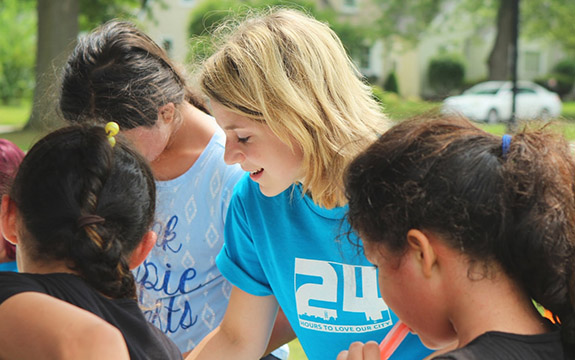Putting humanitarian work on the map

In Summary
- This story first appeared in Swinburne’s Research Impact magazine
Australia’s community services have reaped the rewards of data crunching projects that transform complex social information into visual tools.
“By linking data from government, health organisations, community groups, and the public, we can build useful analytic tools on hard-to-quantify data,” said Associate Professor Amir Aryani, who leads Swinburne’s Social Data Analytics (SoDA) Lab.
One project explored how family violence is presented in the news and on social media.
“We have so much material in language that is messy and nuanced,” explained Professor Anthony McCosker, Deputy Director of Swinburne’s Social Innovation Research Institute.
“We want to shape big data into something that makes sense to people. But it’s hard to turn words into numbers.”
McCosker’s team, including data scientist, Dr Arezou Paneh, used topic modelling to extract key themes around domestic violence from government reports, and then searched for these in news stories and Twitter posts.
“Data visualisation makes studies of this scale possible,” said Paneh.
“We had 100,000 tweets and 11,000 media stories and by identifying a theme in each one, we could make and test hypotheses.”
By drawing on this immense source of “natural language”, rather than a limited set of contrived survey responses, the team could see how the discussion changed over time.
Between 2014 and 2018, people became more engaged in domestic violence discussions following televised events featuring public figures, or after policy announcements that heralded major change. For example, Twitter activity spiked in 2016 when a Royal Commission released its report on family violence in Australia. Engagement has since remained high, but the discussion has shifted towards causes and contexts, possibly as people aim to understand the roots of family violence.
McCosker was also interested in the hidden information, such as everyday acts of charity. By mapping Instagram posts around Melbourne, using the hashtags #volunteer and #charity, in 2018 the SoDA Lab team highlighted humanitarian hot spots around the city centre, and along the Yarra River.
A map displaying the social and economic status of Melbourne’s suburbs, overlaid with the locations of Instagram posts about fundraising, showed that, of the 235 posts, only one was within an economically disadvantaged area. Providers such as the Red Cross, a project partner, can use these insights to mobilise volunteers where they are most needed.
SoDA Lab ultimately aims to build a data collaboration platform to enhance visualisations for community services across Australia. Swinburne’s collaboration with Family Life, an NGO working towards building family resilience, has already helped connect hospitals, social services and families. And SoDA Lab hopes this will be just one piece of the network, aiming to add data on issues ranging from social connectedness to mental health.

